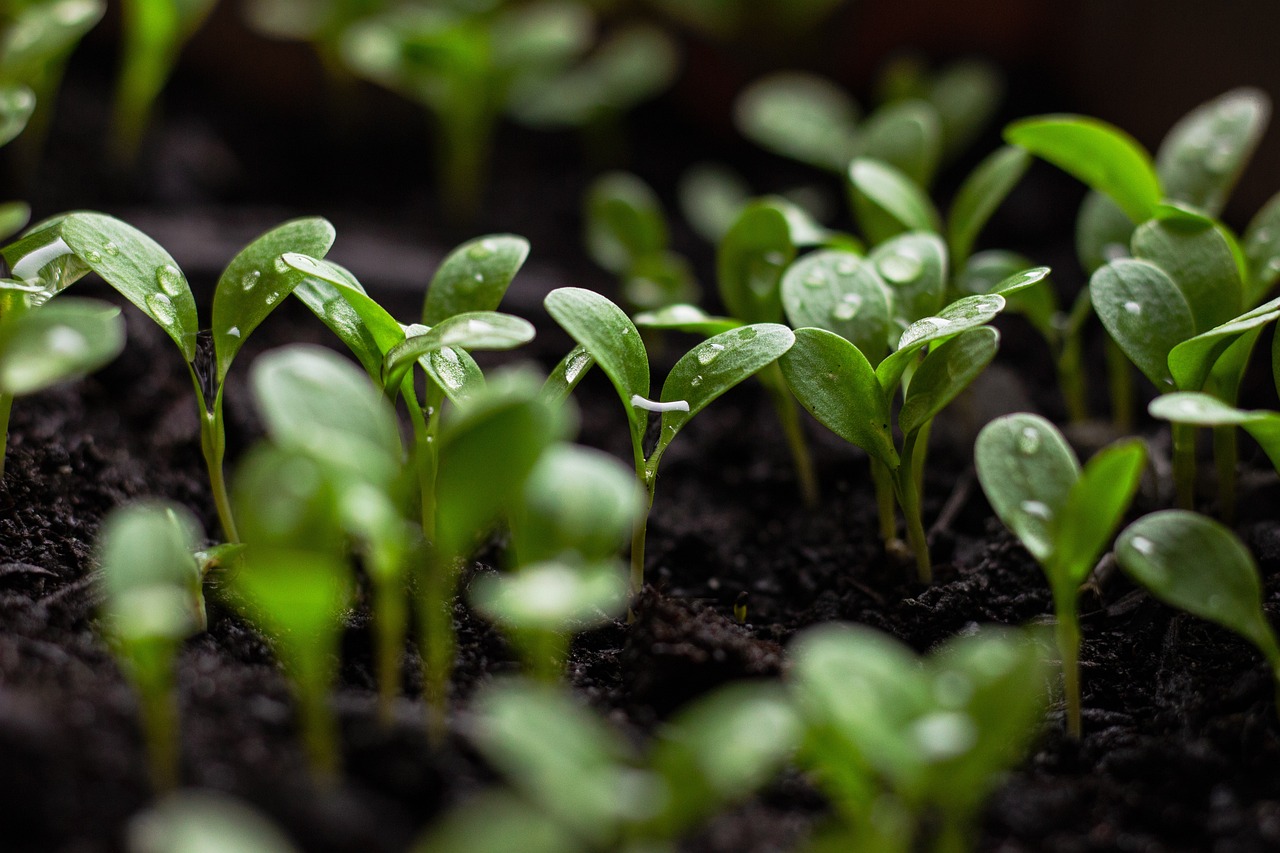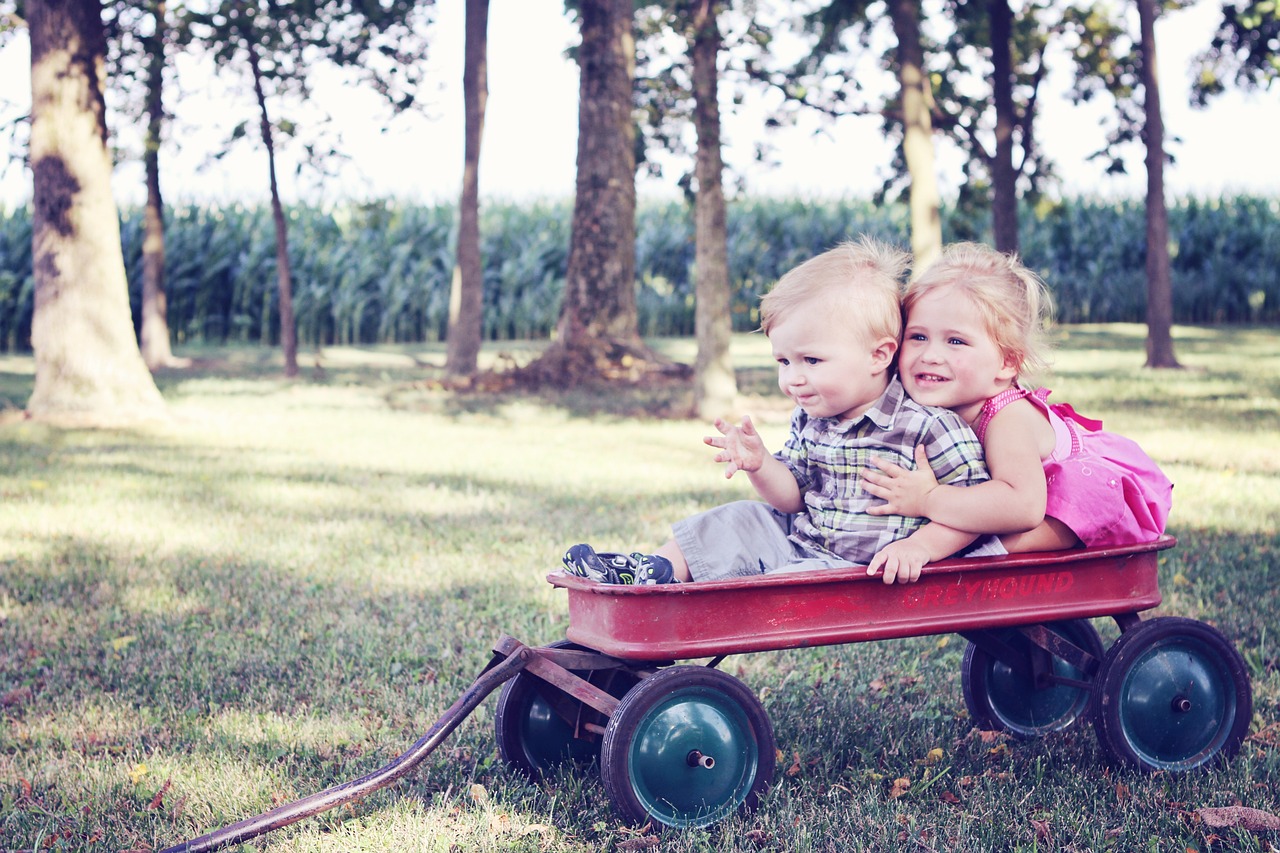How to Encourage Your Kids to Advocate for Sustainability?
In today's world, where climate change and environmental issues dominate the headlines, it has become increasingly important to cultivate a sense of responsibility towards our planet in the younger generation. But how do we, as parents and guardians, inspire our kids to become passionate advocates for sustainability? The answer lies in combining education with practical action, creating an engaging environment where they can learn and grow. By fostering an understanding of sustainability and incorporating eco-friendly practices into daily life, we can empower our children to make a real difference in their communities.
First and foremost, understanding sustainability is the foundation of this journey. To effectively encourage your kids, it's essential to explain what sustainability means in simple, relatable terms. Think of sustainability as a balancing act—it's about meeting our needs today without compromising the ability of future generations to meet theirs. You might say it's like borrowing a book from a library; you can enjoy it now, but you need to return it in good condition for others to enjoy later. By framing sustainability in a way that resonates with their everyday experiences, you can spark their curiosity and inspire them to learn more.
Next, consider the daily routines in your household. Integrating sustainable practices into your family's lifestyle can significantly influence how children perceive their role in protecting the environment. Simple actions, such as using reusable bags for shopping, conserving water while brushing their teeth, or turning off lights when leaving a room, can be powerful lessons. When kids see their parents practicing these habits, they are more likely to adopt them as their own. It's like planting a seed; with nurturing and care, it can grow into something beautiful and impactful.
So, what exactly is sustainability? It's a broad concept that encompasses environmental, social, and economic dimensions. For kids, you can break it down into three main pillars: environmental health, social equity, and economic viability. By explaining these concepts in a way that connects with their lives, such as discussing how pollution affects the air they breathe or how fair trade ensures that farmers are paid fairly, you can help them grasp the importance of sustainability. This foundational knowledge is crucial for nurturing a sense of responsibility and advocacy.
Once your kids understand what sustainability is, the next step is to incorporate it into your daily routines. This can be done through fun and engaging activities that not only teach them but also allow them to practice what they've learned. For instance, you can create a family recycling challenge where everyone competes to see who can recycle the most items in a week. Or, you might set up a family garden, which serves as a hands-on way to learn about nature and sustainability while also providing fresh produce for your meals. These activities not only instill eco-friendly habits but also create lasting memories and family bonding moments.
Teaching kids eco-friendly habits is essential for fostering a sustainable mindset. Here are some actionable steps to instill these habits:
- Recycling: Set up a recycling station at home, labeling bins for paper, plastic, and metal. Show them how to sort their waste properly.
- Conserving Water: Encourage shorter showers and turning off the tap while brushing teeth. You could even install a timer to make it a fun challenge!
- Reducing Energy Use: Teach them to turn off lights and unplug devices when not in use. You can even track the family’s energy consumption together.
Gardening is a fantastic way to teach kids about nature and sustainability. It allows them to see firsthand how plants grow and the importance of healthy soil and water. Starting a family garden can be as simple as planting herbs in pots or creating a backyard vegetable patch. This hands-on experience not only educates them about where food comes from but also fosters a sense of responsibility as they care for their plants. Plus, there's nothing quite like the joy of harvesting your own vegetables!
Encouraging kids to reduce waste is another vital aspect of sustainability. Challenge them to think creatively about how to minimize waste in their daily activities. For example, you could start a DIY project using old clothes to create new items, like tote bags or art supplies. This not only reduces waste but also sparks their creativity and problem-solving skills. It's all about making sustainability fun and engaging!
Spending time outdoors can deepen children's appreciation for the environment. Plan family hikes, nature walks, or beach clean-ups to connect them with nature and teach them about the ecosystems around them. By engaging with the outdoors, kids can develop a personal connection to the environment, making them more likely to advocate for its protection. It's like building a friendship; the more time you spend with someone, the more you care about them.
Utilizing educational resources can enhance children's understanding of sustainability. There are numerous books, documentaries, and websites dedicated to environmental issues that can provide valuable information. For instance, consider reading books like "The Lorax" by Dr. Seuss or watching documentaries like "Our Planet" on Netflix. These resources can spark conversations and inspire kids to think critically about their impact on the world.
Hands-on activities can make learning about sustainability fun. Consider organizing a family project, such as creating a compost bin or building a birdhouse. These interactive projects reinforce their knowledge while allowing them to see the tangible results of their efforts. It’s not just about learning; it’s about experiencing sustainability in action!
Getting involved in community initiatives can empower children to take action. Look for local programs and events that encourage youth participation in sustainability efforts, such as tree-planting days or community gardens. This not only helps them understand their role in the larger community but also fosters a sense of belonging and purpose. Remember, every small action counts!
1. How can I explain sustainability to my young child?
You can explain sustainability by using simple analogies, like comparing it to borrowing a book from a library—enjoying it now but returning it in good condition for others.
2. What are some fun activities to teach kids about recycling?
Consider organizing a recycling competition at home or making art projects using recycled materials. This makes learning fun and interactive!
3. How can I involve my kids in gardening?
Start with simple plants like herbs or flowers in pots. Let them choose what to plant and involve them in the care process.
4. What are some eco-friendly habits I can teach my kids?
Teach them to turn off lights, conserve water, and recycle. Make it a family challenge to see who can reduce waste the most!
5. How can community involvement help my child?
Participating in community events helps children understand their role in the community and fosters a sense of belonging and responsibility towards the environment.

Understanding Sustainability
Sustainability is a term that gets tossed around a lot these days, but what does it really mean, especially for our kids? At its core, sustainability refers to the ability to meet our own needs without compromising the ability of future generations to meet theirs. It’s about creating a balance between economic growth, environmental protection, and social equity. This concept is crucial for children to grasp because it lays the foundation for their role in preserving our planet. Imagine a world where resources are abundant for everyone, and the air is clean enough to breathe without worry. That’s the world we want to create, and it starts with our kids.
When explaining sustainability to children, it’s important to use age-appropriate language. For younger kids, you might say, “Sustainability means taking care of our Earth so that it stays healthy for everyone, including animals and plants.” As they grow older, you can introduce more complex ideas, like the interconnectedness of ecosystems and the impact of human activities on the environment. Think of it like a big puzzle; every piece matters, and if one piece is missing or damaged, the whole picture is affected.
To help children understand why sustainability is important, you can discuss real-world examples. For instance, explain how pollution can harm wildlife and how deforestation affects the climate. Use analogies that resonate with them—like comparing Earth to a shared playground. If we don’t take care of it, it won’t be fun or safe for anyone to play in. By framing sustainability in relatable terms, kids can better appreciate the significance of their actions.
Another effective way to teach kids about sustainability is through storytelling. Books and movies that highlight environmental themes can spark their interest and imagination. You could create a mini-book club at home, where you read together and discuss the lessons learned. This not only enhances their understanding but also encourages them to think critically about environmental issues.
Ultimately, understanding sustainability is about fostering a sense of responsibility. When children realize that their choices—big or small—can impact the world around them, they become more motivated to advocate for change. Whether it's choosing to walk instead of drive, using reusable bags, or participating in community clean-ups, every little action contributes to a larger goal. By instilling these values early on, we empower our children to be the environmental stewards of tomorrow.

Incorporating Sustainability into Daily Life
Integrating sustainability into our daily lives may sound like a tall order, but it’s actually quite achievable, especially when we involve our children in the process. Imagine turning your home into a mini-ecosystem where every action, no matter how small, contributes to a healthier planet. By making sustainability a family affair, we not only teach our kids about the environment but also empower them to make a difference. So, how can we weave sustainable practices into our everyday routines?
First off, it’s essential to start with simple, tangible actions that resonate with children. For instance, recycling can be made fun! Set up colorful bins in your home, each designated for different materials like paper, plastic, and glass. Make a game out of sorting recyclables together. This not only teaches them what can be recycled but also fosters a sense of responsibility. You could even have a weekly family challenge to see who can collect the most recyclables, turning learning into a playful competition.
Another impactful way to incorporate sustainability is through conserving water. Kids can easily grasp the concept of saving water by participating in activities like timing showers or turning off the tap while brushing their teeth. You could create a fun chart to track their water-saving efforts, rewarding them with stickers for their achievements. This not only instills eco-friendly habits but also encourages teamwork and accountability.
Moreover, engaging in gardening is a fantastic hands-on approach to teach children about sustainability. It’s not just about planting seeds; it’s about nurturing life and understanding where our food comes from. Start a small family garden in your backyard or even use pots on a balcony if space is limited. Kids will love watching their plants grow, and you can discuss the importance of local produce and organic farming practices. Gardening together can become a cherished family tradition, filled with learning moments and laughter.
As we talk about reducing waste, it’s vital to highlight creative ways to minimize it. For example, involve your kids in meal planning, focusing on using leftovers creatively. Teach them to make delicious dishes from what’s left in the fridge, turning it into a fun cooking session. This not only reduces food waste but also fosters creativity and resourcefulness in the kitchen. You can also explore upcycling projects, where old items are transformed into something new and useful. This could be as simple as turning a glass jar into a decorative planter or creating art from scrap materials.
Finally, let’s not forget about the importance of engaging with nature. Encourage your kids to spend time outdoors, exploring parks, forests, or even your backyard. This connection to nature can deepen their appreciation for the environment. Plan family hikes or nature walks where you can observe local wildlife, discuss ecosystems, and even pick up litter along the way. These experiences can be incredibly impactful, instilling a sense of stewardship in your children.
By incorporating these sustainable practices into your daily life, you’re not just teaching your kids about the environment; you’re also creating lasting memories and instilling values that will shape their future. Remember, every small action counts, and together, as a family, you can make a significant impact!
- How can I start teaching my kids about sustainability? Begin with simple concepts and involve them in practical activities like recycling and gardening.
- What are some fun activities to engage kids in sustainability? Consider gardening, nature walks, and creative cooking sessions using leftovers.
- How can we track our sustainability efforts as a family? Create charts or games that reward kids for their eco-friendly actions, making it a fun competition.

Eco-Friendly Habits
Teaching kids about is not just a task; it’s an adventure! Imagine turning your home into a mini-ecosystem where every action counts towards a healthier planet. Start by making sustainability a fun game. For instance, when it comes to recycling, you can create a family challenge. Set up a colorful recycling station in your home and see who can sort the most items correctly within a week. This playful competition not only educates but also instills a sense of responsibility. Kids love to win, and what better prize than the knowledge that they are helping the Earth?
Another fantastic habit to instill is water conservation. Kids often leave the tap running while brushing their teeth or washing their hands. Turn this into a learning moment! You could set a timer and challenge them to finish washing their hands before the timer goes off. Not only does this save water, but it also teaches them to be mindful of their consumption. You might even consider creating a water usage chart to track how much water your family saves each week. Celebrate milestones with a fun family outing or a movie night!
Moreover, consider introducing the concept of upcycling. Instead of throwing away old items, encourage your kids to think creatively about how to repurpose them. For example, a glass jar can become a beautiful plant holder, or an old t-shirt can be transformed into a reusable shopping bag. This not only reduces waste but also sparks creativity in children. You can organize a DIY craft day where the whole family participates in upcycling projects. This hands-on approach makes the learning experience memorable and impactful.
Lastly, don’t forget about energy conservation. Teach your kids the importance of turning off lights when they leave a room or unplugging devices that are not in use. You could even conduct an energy audit of your home together. Walk around and identify areas where energy is being wasted. This not only educates them about energy consumption but also empowers them to take action. By making these eco-friendly habits a part of your family's daily routine, you’re not just raising environmentally conscious children; you’re nurturing future leaders who will advocate for sustainability.
Q1: How can I make learning about eco-friendly habits fun for my kids?
A1: Incorporate games and challenges, like recycling competitions or DIY projects, to make learning engaging and enjoyable.
Q2: At what age should I start teaching my kids about sustainability?
A2: It's never too early! You can start introducing basic concepts as soon as they can understand simple ideas, typically around 3-4 years old.
Q3: Are there any resources I can use to help teach my kids about the environment?
A3: Yes! There are many children's books, documentaries, and websites dedicated to teaching kids about sustainability and the environment.

Gardening Together
Gardening together is more than just a fun family activity; it's a powerful way to teach kids about sustainability and the environment. Imagine the joy on your child's face as they plant a seed and watch it grow into a vibrant flower or a delicious vegetable! This hands-on experience not only fosters a love for nature but also instills a sense of responsibility toward caring for our planet. By working alongside your children in the garden, you can create lasting memories while imparting valuable lessons about where our food comes from and the importance of nurturing our ecosystems.
To get started, consider the following steps that can help you and your kids embark on this green adventure:
- Choose the Right Space: Whether you have a big backyard or just a small balcony, you can create a garden. Use pots or raised beds if space is limited.
- Select Easy-to-Grow Plants: Start with plants that are easy to manage and grow quickly, such as tomatoes, radishes, or sunflowers. This will keep your kids engaged and excited.
- Make it Educational: As you plant, talk about the role of plants in our environment, how they clean the air, and provide food for us and wildlife.
Gardening also teaches children about the cycle of life. They learn that plants need sunlight, water, and care to thrive, much like how we need to take care of our environment. You can introduce concepts like composting, which helps reduce waste and enriches the soil, demonstrating the importance of recycling organic materials. This practice not only minimizes trash but also provides your garden with nutrient-rich soil, creating a win-win situation!
Moreover, gardening can be a great way to discuss broader sustainability topics. For instance, you can explain how certain gardening practices, like using organic fertilizers or planting native species, can help protect local ecosystems. Encourage your kids to think critically about their choices in the garden and how those choices impact the world around them.
Involving your children in gardening can also spark their interest in healthy eating. When they grow their own fruits and vegetables, they are more likely to try new foods and understand the importance of nutrition. You can even turn your gardening efforts into a family cooking night, where you prepare meals using the produce you've grown together. This not only reinforces the connection between gardening and healthy eating but also provides another opportunity for quality family time.
So, grab those gardening gloves and get ready to dig in! The lessons learned in the garden can sow the seeds of sustainability in your child's heart, nurturing a lifelong commitment to caring for our planet.

Reducing Waste
Reducing waste is not just a buzzword; it’s a crucial part of the sustainability puzzle that we need to teach our kids. Imagine your home as a small planet—everything that enters and exits affects its health. By instilling the importance of waste reduction in our children, we empower them to be conscientious citizens of that planet. So, how do we get started? It’s all about making it relatable and fun!
First off, let’s talk about the concept of “the three Rs”: Reduce, Reuse, and Recycle. These principles are the cornerstone of waste reduction. Explain to your kids that reducing waste means creating less trash in the first place. For example, when shopping, they can choose products with minimal packaging or opt for bulk items. This simple choice can make a significant impact over time. Encourage them to ask questions like, “Do we really need this?” or “Is there a more sustainable option?” This not only fosters critical thinking but also makes them feel involved in the decision-making process.
Next, let’s dive into the reuse aspect. Kids love crafts, so why not turn old items into new treasures? Gather materials like glass jars, cardboard boxes, and old clothes, and set up a crafting session. You could create planters from jars or turn t-shirts into reusable shopping bags. This not only reduces waste but also sparks creativity and resourcefulness in your children. They’ll learn that just because something is old or used doesn’t mean it has to be thrown away—it can be transformed!
Recycling is the final piece of the puzzle. Make sure your kids know how to sort recyclables correctly. Set up a colorful recycling station at home with clear labels for paper, plastic, and glass. Turn it into a game: whoever sorts the most items correctly gets a small reward. This playful approach makes learning about recycling engaging and memorable. Plus, it instills a sense of responsibility as they see their efforts contributing to a bigger cause.
Another effective way to reduce waste is through meal planning. Teach your kids how to plan meals for the week, focusing on using ingredients that can be repurposed. For example, if you buy spinach for one dish, plan another meal that incorporates it to avoid spoilage. This not only cuts down on food waste but also encourages them to think creatively about their meals. You can even create a family chart to track what items are used and what needs to be bought, making it a fun family project.
Lastly, consider the impact of single-use items. Discuss with your children the environmental consequences of items like plastic straws, bags, and utensils. Encourage them to opt for reusable alternatives instead. You might say, “Every time we choose a reusable bag over a plastic one, we’re saving the ocean!” This kind of messaging helps them connect their actions to the health of the planet.
In summary, reducing waste is a multifaceted approach that can be woven into the fabric of your family's daily life. By making it fun, engaging, and relatable, you can inspire your kids to become champions of sustainability. Remember, every small action counts, and the habits they form now will shape their future and the future of our planet.
- Why is reducing waste important? Reducing waste helps conserve natural resources, decreases pollution, and minimizes the amount of waste sent to landfills.
- How can I teach my kids about waste reduction? Involve them in activities like recycling, reusing materials for crafts, and meal planning to make learning fun and practical.
- What are some easy ways to reduce waste at home? Start by using reusable bags, avoiding single-use plastics, and composting food scraps.
- Can reducing waste really make a difference? Absolutely! Every small action contributes to a larger movement towards sustainability and a healthier planet.

Engaging with Nature
Engaging with nature is not just a pastime; it’s a transformative experience that can profoundly shape a child's understanding of the environment. Imagine this: you're walking through a lush forest, the leaves rustling gently in the breeze, the sun filtering through the branches, and the sweet scent of earth after rain. This sensory experience is invaluable for kids, as it creates a lasting connection with the natural world. When children interact with nature, they not only learn about ecosystems and biodiversity but also develop a sense of responsibility towards preserving these precious resources.
So, how can you encourage your children to immerse themselves in nature? One of the most effective ways is to plan regular outdoor activities. Whether it’s hiking, bird watching, or simply playing in the park, these activities can ignite a passion for the environment. For instance, a family hike can turn into a mini-adventure where kids learn to identify different plants and animals. Perhaps you can even create a nature scavenger hunt, where they have to find specific leaves, flowers, or insects. This not only makes the experience fun but also educational!
Moreover, you can introduce your children to community initiatives that focus on environmental stewardship. Many local organizations host events such as tree planting days, clean-up drives, and nature walks. Getting involved in these activities can empower your kids to take an active role in their community while fostering a sense of teamwork and responsibility. They’ll be amazed to see how their small actions can contribute to a larger cause, reinforcing the idea that everyone can make a difference.
Additionally, consider incorporating nature into your home life. Create an outdoor space where your kids can explore freely. This could be a small garden, a butterfly habitat, or even a simple bird feeder. Engaging with nature at home allows children to observe wildlife up close and understand the delicate balance of ecosystems. It’s like having a front-row seat to the wonders of nature!
Finally, let’s not forget the power of storytelling. Share books and documentaries that highlight the beauty of nature and the importance of conservation. Stories that feature young environmentalists can inspire your kids to think critically about their role in protecting the planet. As they read about others who have taken action, they might feel motivated to embark on their own sustainability journey.
In summary, engaging with nature is a multifaceted approach that involves outdoor activities, community involvement, and educational resources. By fostering a love for the natural world, you’re equipping your children with the tools they need to become passionate advocates for sustainability. After all, when kids feel connected to the environment, they’re more likely to protect it. So, get outside, explore, and let nature be your teacher!
- Why is it important for children to engage with nature?
Engaging with nature helps children develop a sense of responsibility towards the environment and fosters a deeper appreciation for the natural world. - What are some simple outdoor activities for kids?
Activities like hiking, bird watching, gardening, and nature scavenger hunts can be both fun and educational. - How can community involvement impact children's views on sustainability?
Participating in local environmental initiatives empowers children to see the impact of their actions and fosters a sense of community responsibility. - What role do stories play in teaching kids about sustainability?
Stories can inspire children by showcasing real-life examples of environmental activism, encouraging them to take action in their own lives.

Educational Resources
When it comes to fostering a deep understanding of sustainability in children, play a pivotal role. They can transform abstract concepts into tangible knowledge that kids can relate to. By introducing them to a variety of materials, you can ignite their curiosity and encourage them to explore the world around them. Whether through books, documentaries, or interactive websites, these resources can provide a wealth of information on environmental issues that are crucial for developing young advocates for sustainability.
Books can be a fantastic starting point. They cater to different age groups and can present complex ideas in a fun and engaging manner. For younger children, picture books filled with colorful illustrations can make learning about nature and sustainability an adventure. As they grow older, chapter books and non-fiction titles can dive deeper into topics such as renewable energy, climate change, and conservation efforts. Here are some recommended titles:
| Title | Author | Age Group |
|---|---|---|
| The Lorax | Dr. Seuss | 4-8 years |
| What a Waste: Trash, Recycling, and Protecting our Planet | Jess French | 6-10 years |
| Earth Heroes: 20 Inspiring Stories of People Saving Our Planet | Linda Siegel | 8-12 years |
| The Uninhabitable Earth: Life After Warming | David Wallace-Wells | 12+ years |
Documentaries can also be a powerful tool. They visually depict the challenges our planet faces and showcase inspiring stories of individuals and communities making a difference. Consider watching documentaries like "Our Planet" or "Before the Flood" with your children. These films not only educate but also spark conversations about what actions can be taken to protect our environment.
Additionally, the internet is a treasure trove of resources. Websites like National Wildlife Federation Kids and EPA for Students offer interactive games, quizzes, and articles tailored to engage young minds. These platforms can make learning about sustainability feel like an exciting quest rather than a chore.
To further enhance their learning experience, consider incorporating interactive learning activities. Hands-on projects such as building a birdhouse, creating a compost bin, or participating in a local cleanup can reinforce what they learn from books and documentaries. These activities not only solidify their understanding but also empower them to take action in their own communities.
Finally, remember that learning about sustainability is not just about absorbing information; it's about taking action. Encourage your kids to share what they've learned with friends and family, or even start a project at school. This not only reinforces their knowledge but also helps to create a ripple effect, inspiring others to become advocates for our planet.
- What age is appropriate to start teaching kids about sustainability? It's never too early! Start with simple concepts for younger children and gradually introduce more complex ideas as they grow.
- How can I make learning about sustainability fun? Use interactive resources like games, hands-on projects, and engaging documentaries to make the learning process enjoyable.
- Are there any online courses for kids on sustainability? Yes, many organizations offer online courses tailored for children that cover various aspects of environmental education.

Interactive Learning Activities
When it comes to teaching kids about sustainability, nothing beats the charm of . These hands-on experiences not only engage children but also make the concepts of sustainability stick in their minds. Imagine your child planting seeds, nurturing them, and watching them grow into beautiful plants. This isn’t just gardening; it’s a lesson in patience, responsibility, and the miracle of nature. By involving kids in interactive activities, you're not just teaching them about the environment; you're allowing them to become a part of it.
One fantastic way to get started is by organizing a nature scavenger hunt. This activity encourages kids to explore their surroundings while learning about local flora and fauna. You can create a simple checklist of items they might find, such as different types of leaves, flowers, or insects. As they search, they’ll become more aware of the biodiversity around them, fostering a deeper appreciation for nature. Plus, it’s a fun way to get them moving and enjoying the outdoors!
Another engaging activity is to set up a recycling art project. Gather materials like cardboard, plastic bottles, and old newspapers, and challenge your kids to create something unique. Whether it’s a sculpture, a bird feeder, or even a homemade game, this not only teaches them about recycling but also sparks their creativity. You might be surprised at what they come up with! This project can lead to discussions about waste and the importance of reusing materials, reinforcing the sustainability message.
Additionally, consider incorporating technology into learning. There are numerous apps and online games focused on environmental education. For instance, games that simulate running a sustainable farm can teach kids the challenges and rewards of eco-friendly practices. By blending technology with sustainability, you’re catering to their interests while instilling important values.
To wrap up these activities, it’s essential to have a reflection session. Sit down with your kids and discuss what they learned from each activity. Ask them questions like, “What surprised you the most?” or “How can we apply what we learned at home?” This reflection not only reinforces their learning but also encourages them to think critically about their role in promoting sustainability.
In summary, interactive learning activities are a powerful tool in teaching children about sustainability. They allow kids to experience the concepts firsthand, making learning both fun and impactful. So, roll up your sleeves, get your hands dirty, and embark on this exciting journey of environmental education together!
- What age is appropriate for interactive learning activities?
Interactive activities can be adapted for various age groups, from toddlers to teenagers. Tailor the complexity of the activity to suit their developmental stage.
- How can I make sustainability fun for my kids?
Incorporate games, crafts, and outdoor adventures that relate to sustainability. The key is to make learning feel like play!
- Are there resources available for sustainability education?
Yes! Many websites, books, and local programs offer resources to help educate children about sustainability in a fun and engaging way.

Community Involvement
Getting involved in the community is a fantastic way to inspire your kids to take action on sustainability. When children see their efforts translate into real-world changes, it ignites a passion for environmental advocacy. Imagine your child participating in a local clean-up day, picking up trash from a nearby park, and realizing that their small actions can lead to a cleaner environment. This hands-on experience not only teaches them about the importance of keeping their surroundings clean but also fosters a sense of pride and responsibility.
One effective way to encourage community involvement is to explore local programs and initiatives that focus on sustainability. Many towns and cities have organizations dedicated to environmental education and action. For instance, you might find community gardens, tree planting events, or recycling drives that welcome volunteers of all ages. By participating in these activities, your children can meet like-minded peers and learn from adults who are passionate about sustainability.
Here are some ideas to get started:
- Volunteer for Clean-Up Days: Join local groups that organize clean-up events in parks, beaches, or rivers. It’s a great way to bond as a family while making a tangible difference.
- Participate in Community Gardens: Engage your kids in a community garden project where they can learn about growing food sustainably and the importance of local produce.
- Attend Workshops: Look for workshops or seminars on sustainability topics, such as composting or renewable energy, that your children can attend with you.
Moreover, don't underestimate the power of social media and technology. Encourage your kids to follow local environmental groups online. This can help them stay informed about upcoming events and initiatives. They can even share their experiences on their social media platforms, which may inspire their friends to get involved too!
Community involvement not only empowers children but also creates a ripple effect. When kids engage with their communities, they become advocates for change, inspiring others to follow suit. It’s like planting seeds of sustainability; with time and care, these seeds will grow into a lush garden of environmental awareness and action.
Q: How can I find local community sustainability events?
A: You can check local government websites, community bulletin boards, or social media pages dedicated to environmental initiatives in your area. Many organizations also post events on platforms like Facebook or Eventbrite.
Q: What age is appropriate for kids to start getting involved in community projects?
A: Kids can start participating in community projects as early as preschool age, depending on the activity. Family-friendly events often welcome children of all ages, making it easy for everyone to contribute.
Q: How can I encourage my child to take the lead in sustainability efforts?
A: Encourage them to express their ideas and passions. Provide them with opportunities to lead small projects, like organizing a neighborhood clean-up or starting a recycling program at school. Support and celebrate their efforts to boost their confidence.
Frequently Asked Questions
- What is sustainability, and why is it important for kids to learn about it?
Sustainability refers to meeting our own needs without compromising the ability of future generations to meet theirs. Teaching kids about sustainability is crucial because it fosters a sense of responsibility towards the environment, encouraging them to think critically about their actions and their impact on the planet.
- How can I explain sustainability to my child in a way they will understand?
Using simple terms and relatable examples works wonders! You can explain sustainability by comparing it to sharing toys; just like how we want to make sure everyone gets a turn, we need to ensure that resources like water and trees are available for everyone, now and in the future.
- What are some eco-friendly habits I can teach my kids?
There are plenty of eco-friendly habits you can instill in your children! Start with simple actions like recycling, conserving water, turning off lights when they leave a room, and using reusable bags. These small steps can lead to big changes over time!
- How can gardening help my child understand sustainability?
Gardening is a fantastic way to connect kids with nature! When they plant seeds and watch them grow, they learn about ecosystems, the importance of biodiversity, and the effort it takes to grow food sustainably. Plus, it’s a fun family activity that can spark a lifelong love for the environment!
- What are creative ways to reduce waste at home with my kids?
You can turn waste reduction into a fun challenge! Encourage your kids to come up with ideas like reusing containers for storage, creating art from scrap materials, or starting a compost bin for food scraps. Making it a game can really engage them!
- How can spending time in nature benefit my child?
Spending time outdoors helps children develop a deeper appreciation for the environment. Activities like hiking, birdwatching, or simply exploring a local park can enhance their understanding of nature and inspire them to become stewards of the planet.
- What educational resources are available to teach kids about sustainability?
There are many great resources out there! Look for books that focus on environmental topics, engaging documentaries that illustrate sustainability issues, and websites with interactive games and quizzes. These resources can make learning fun and informative!
- What are some interactive learning activities for kids regarding sustainability?
Hands-on activities like building a birdhouse, creating a mini compost bin, or organizing a neighborhood clean-up can be both educational and enjoyable. These projects not only teach valuable lessons but also empower kids to take action in their communities.
- How can my child get involved in community sustainability initiatives?
Look for local programs, such as tree planting events, community gardens, or environmental clubs at school. Getting involved in these initiatives helps kids see the impact of their efforts and connects them with like-minded peers who share their passion for the environment.



















